
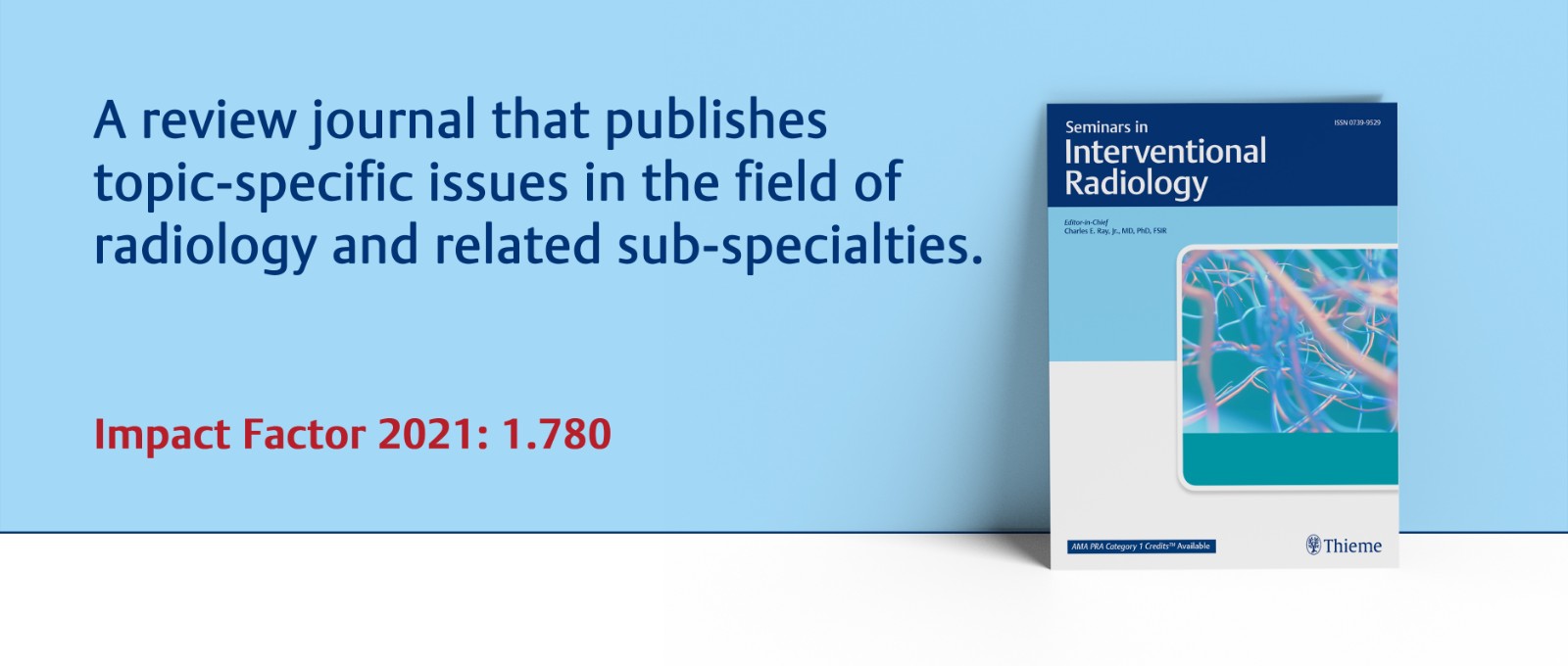
▼
Thieme介入放射医学期刊Seminars in Interventional的2021年影响因子提高至1.780。欢迎免费阅读本刊上一年度高被引论文。
MOST CITED ARTICLES
Tafti et al.
Lung ablation is ever more recognized since its initial report and use almost two decades ago. With technological advancements in thermal modalities, particularly microwave ablation and cryoablation, better identification of the cohort of patients who best benefit from ablation, and understanding the role of imaging after ablation, image-guided thermal ablation for primary and secondary pulmonary malignancies is increasingly recognized and accepted as a cogent form of local therapy.
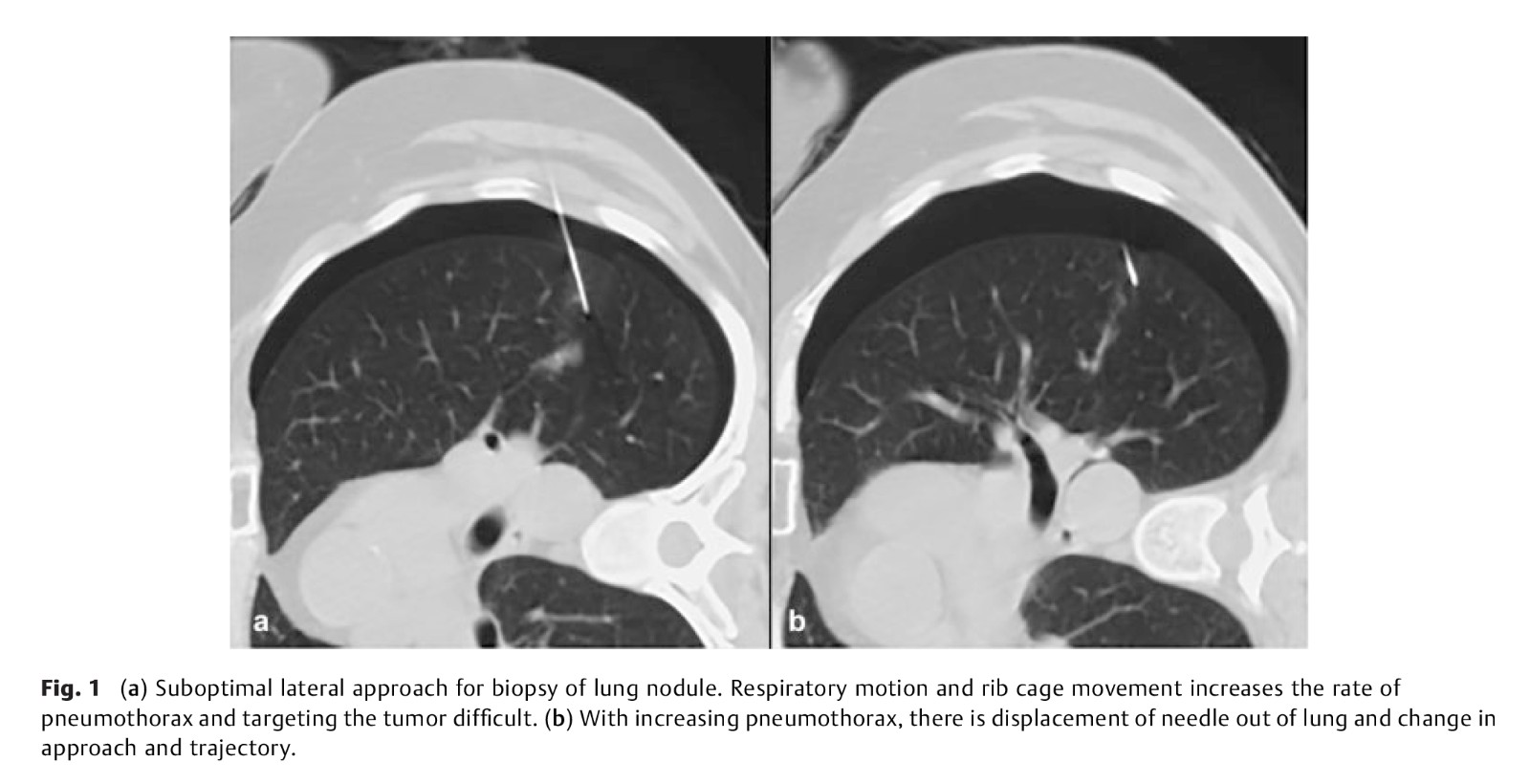
Moussa et al.
Lung cancer is the leading cause of cancer-related mortality worldwide. Eighty-five percent of cases correspond to non-small cell lung cancer (NSCLC) and pivotal nonsurgical options for early-stage disease include percutaneous ablation and stereotactic body radiation therapy (SBRT). Microwave Ablation (MWA) is a locoregional treatment option that has many advantages over radiofrequency ablation and has been able to overcome the limitations of this technique in the treatment of early-stage NSCLC. In this review article, we highlight the current evidence supporting the use of MWA in patients with early-stage NSCLC and discuss the technical considerations of the procedure, including optimal patient selection and planning strategies, as well as the potential complications and reported outcomes. Finally, we mention future trends involving ablation in NSCLC, including its role in combination with SBRT in central tumors, management of post-SBRT local recurrence, and its potential as an adjuvant treatment option for patients with resistance to systemic therapy or in combination with checkpoint inhibitors.
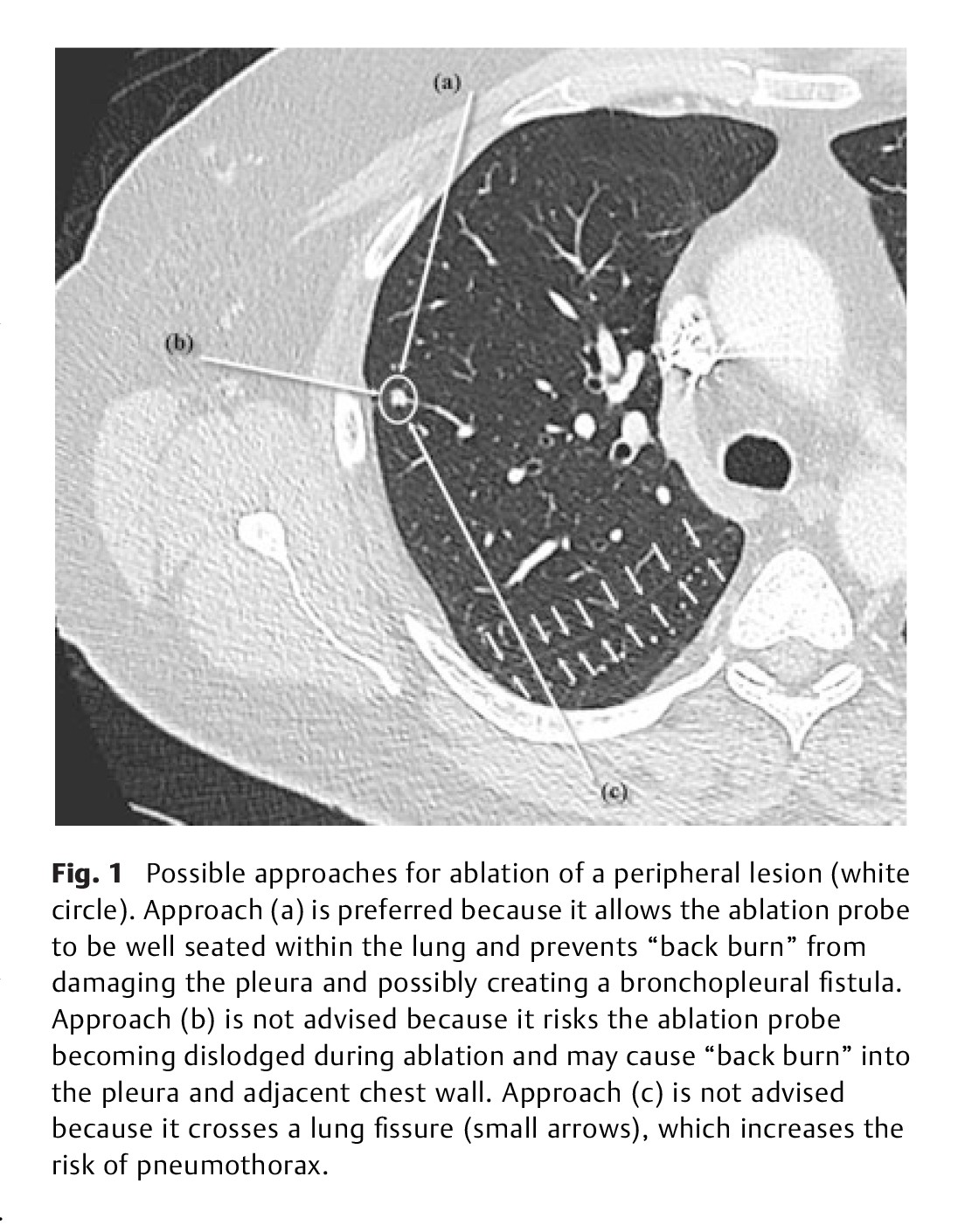
Lea et al.
Metastatic disease involving the pelvis is common, often resulting in significant pain and disability. Several percutaneous interventions for unstable pelvic metastatic disease have been described, including osteoplasty, ablation, and screw fixation, that when used alone or in combination can significantly reduce pain and disability from metastatic bone disease. While it is possible to make a significant impact in patient care with basic principles and techniques, certain advanced techniques can extend the application of percutaneous interventions while minimizing morbidity.
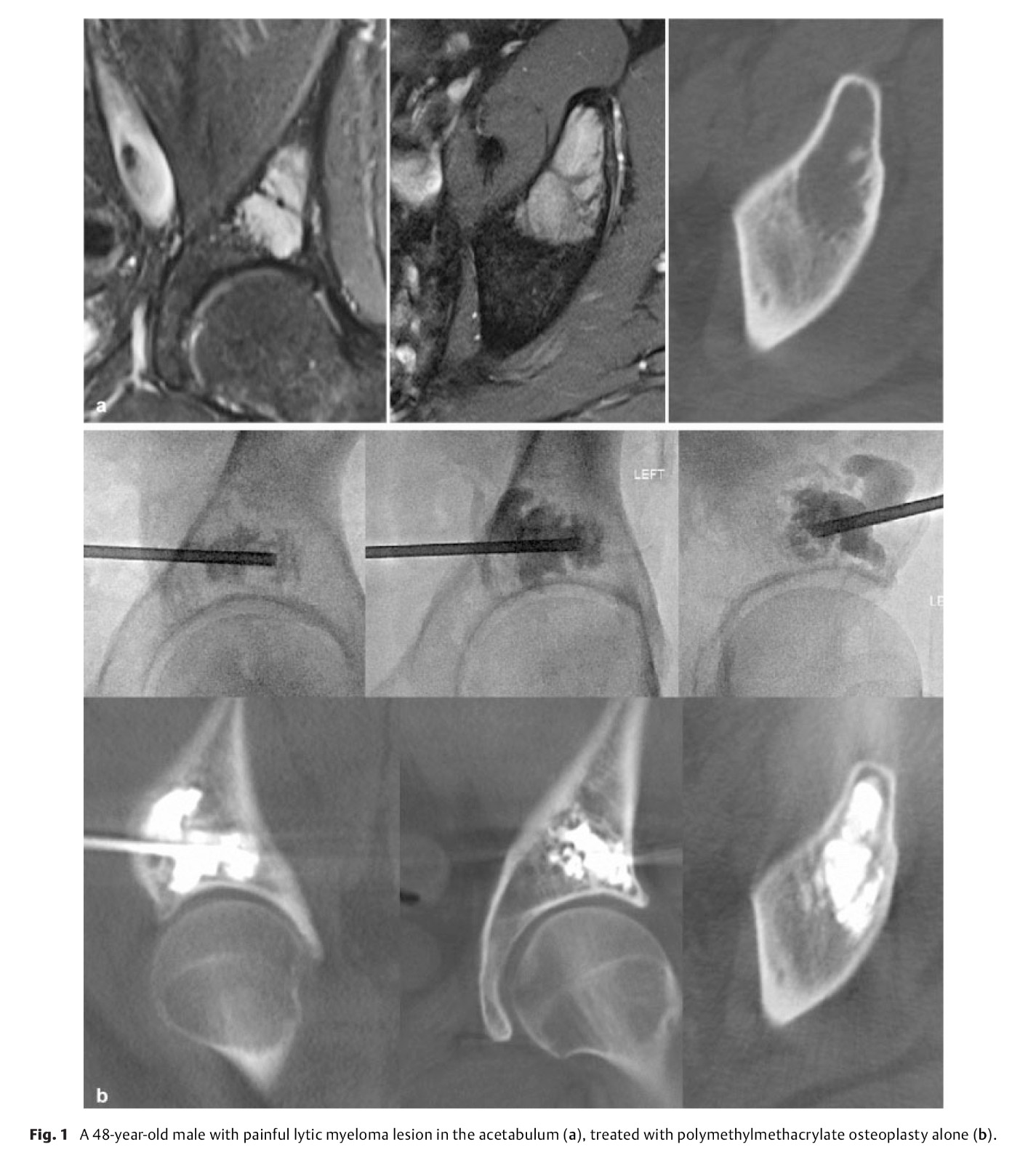
Bakdash et al.
Percutaneous renal biopsy is widely used for diagnosis, prognosis, and management of nephropathies. Complications may arise after renal biopsy, most commonly in the form of bleeding. Efforts should be taken to optimize modifiable risk factors such as hypertension, thrombocytopenia, and coagulopathy prior to the procedure. Unmodifiable risk factors such as poor renal function, gender, and underlying histologic diagnosis may be used to identify high-risk patients. Delayed presentation of bleeding complications is common, and close clinical follow-up is crucial.
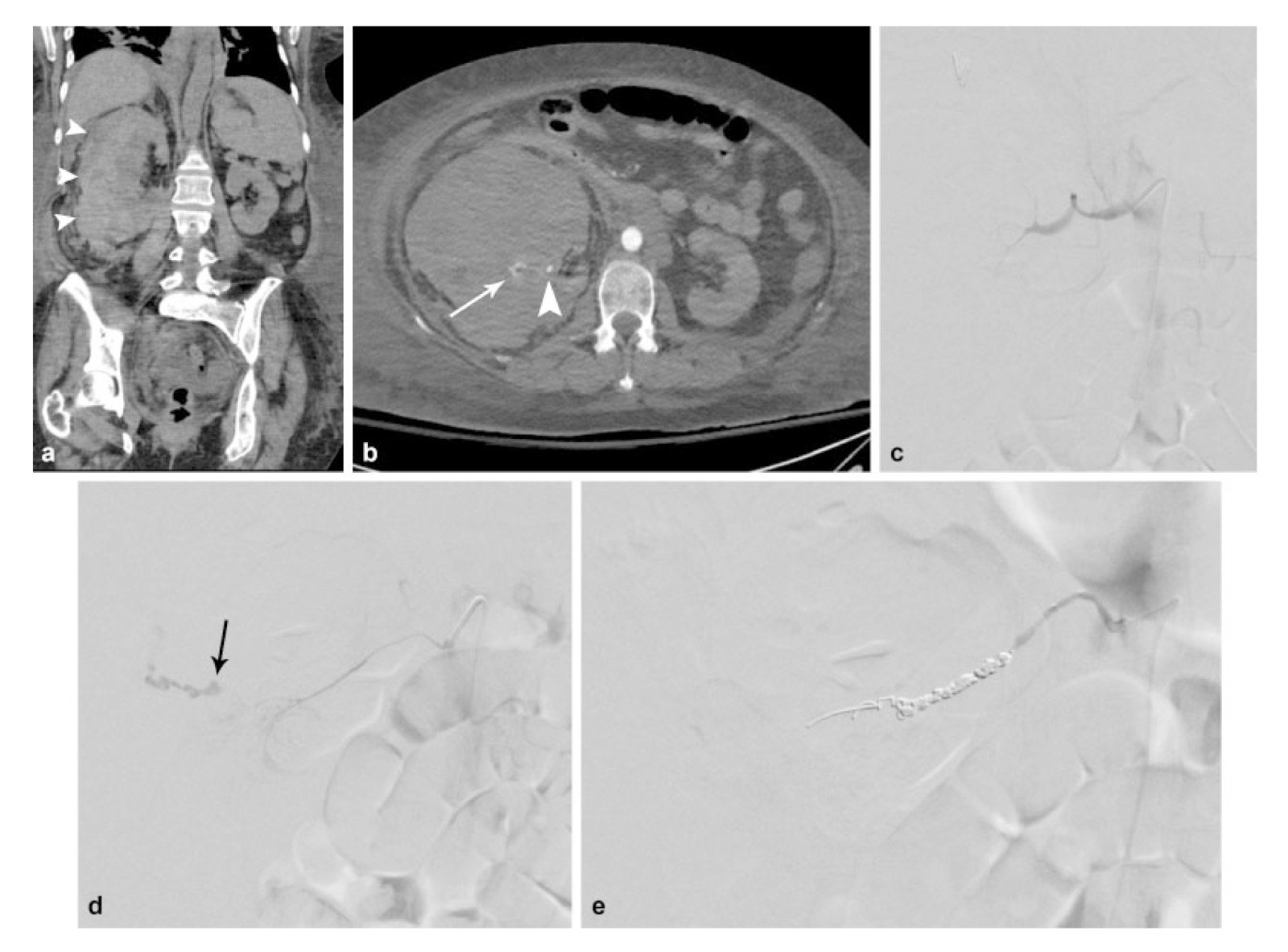
Postablation Immune Microenvironment: Synergy between Interventional Oncology and Immuno-oncology
Kim, Erinjeri
Current tumor thermal ablation techniques rely on extreme temperatures to induce irreversible cellular injury and coagulative tissue necrosis. Ablation-induced cellular injury or death releases cancer neoantigens and activates the cancer-immunity cycle, potentially generating tumor-specific immune effectors. However, multiple negative regulatory modulators exist at each step of the cycle, mitigating meaningful and therapeutic anticancer effect provided by the immune system. Recent studies have focused on the introduction and testing of adjuvant immunotherapy combined with ablation to synergistically shift the equilibrium out of inhibitory immune modulation. This article reviews the immune microenvironment in relation to image-guided ablation techniques and discusses current and upcoming novel strategies to take advantage of antitumor immunity.
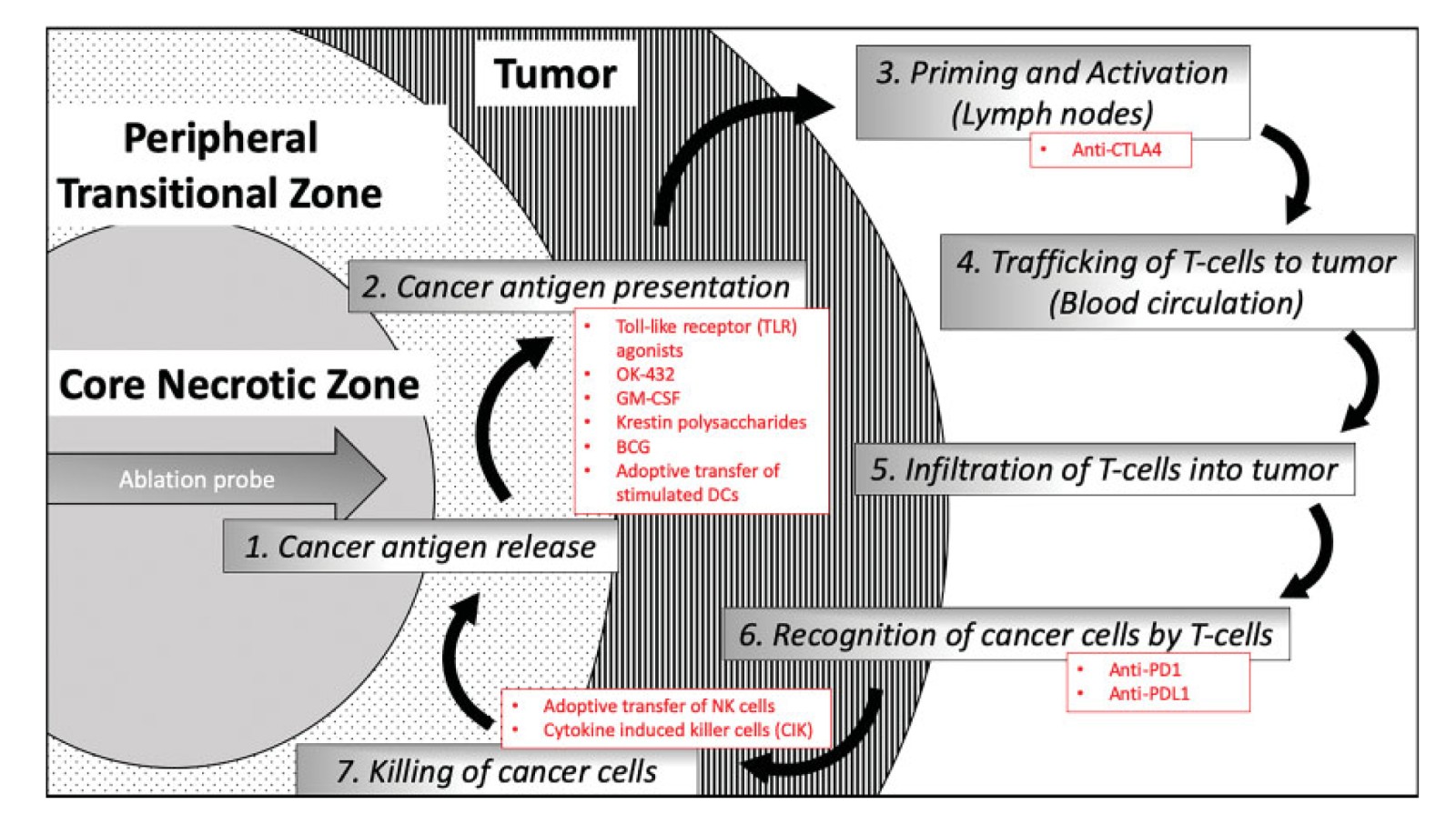
Beau B. Toskich
Current oncologic practice has unambiguously incorporated the use of ablative technology as definitive therapy for both primary and oligometastatic malignancy. This is evidenced by the inclusion of multiple ablation modalities within international, societal, and interdisciplinary vetted guidelines. A welcome addition to the fight against cancer, ablation has had a long and impressive journey from its modest origins in rudimentary clinical practices to surpassing surgical resection as a first-line treatment in select patients.
